May 26, 2025
Author:Sam Wonder
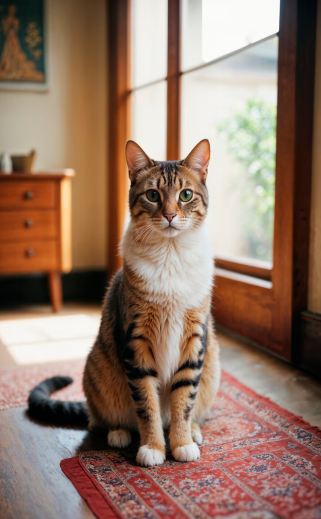
Ever seen a cat glide past like it owns the room—tail tall, curved, and full of expression? That tail isn’t just decoration. It’s balance. It’s communication. It’s instinct wrapped in fur. Long-tailed cats do more than look majestic—they function differently.
But here's the twist: not all long tails mean the same thing. Some hint at breed lineage. Others point to behavior quirks, agility, or even emotional states. If you've assumed a long tail is just about looks, you’re missing half the story. This article breaks it down for you, clearly and quickly.
Here’s what we’ll cover:
● What a long tail actually does for a cat
● Which breeds naturally have the longest tails
● The link between tail length and agility
● How cats use their tails to communicate
● Signs your cat’s long tail is sending you
● Health issues linked to long tails (and how to spot them)
● Tips for grooming and managing tail hygiene
By the end, you’ll read that tail like a pro.
A cat’s tail isn’t a bonus feature—it’s a built-in tool that affects how it moves, reacts, and communicates. For long-tailed cats, that tool gets even more nuanced.
● Balance That Holds Everything Together: Every leap, twist, and landing relies on the tail. It acts as a counterweight, helping the cat stay steady during high-speed sprints, rooftop acrobatics, or tight corner turns. Long tails allow for sharper directional control and a lower chance of missteps. Cats use their tails like tightrope walkers use a pole—adjusting angles and shifting balance midair. That’s not a coincidence. It’s biomechanics at work.
● Communication in Motion: Tail movement isn’t random. It’s direct feedback. A swish can signal irritation. A high-held tail often signals confidence or curiosity. Long tails exaggerate these signals, making feline communication easier to interpret, once you know what to watch for.
● Temperature Regulation: The tail also helps with body temperature. Cats may curl their tails around themselves in cold weather, especially those with longer, fuller tails. It works as natural insulation, especially during rest.
● Injury Prevention: A longer tail may also help absorb shock. It spreads the physical force of a fall or a bump, protecting the spine and improving the cat’s overall agility response.
That’s why length isn’t vanity—it’s function.
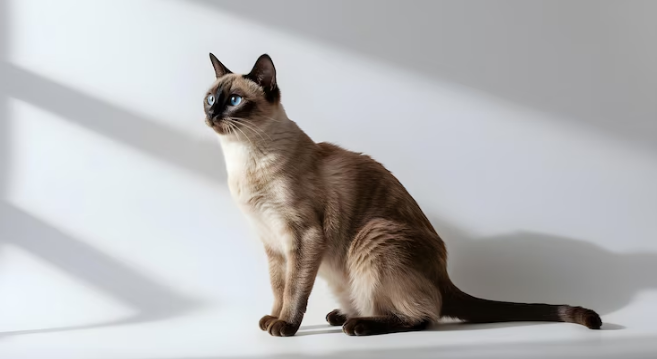
Tail length isn’t just about function—it’s often embedded in the breed’s genetics. Some cats are simply built with longer tails, not as a fluke, but as a consistent trait passed down over generations. Let’s break down the breeds that are leading the long-tail pack.
● Maine Coon: This is the heavyweight champ of the cat world—and that includes the tail. Maine Coons don’t just walk into a room, they take up space. Their tails often stretch up to 16 inches, thick and plush like a winter scarf. And it’s not just for show. In colder climates, they’ll curl it around themselves like a built-in blanket. One standout, Cygnus Regulus Powers, holds the Guinness World Record for longest tail on a domestic cat—17.58 inches. That’s not a guess. That’s officially measured and filed.
● Balinese: Think Siamese, but with a little more flair. Balinese cats carry themselves like dancers—elegant, fluid, confident. Their tails are fine and plume-like, often arching up behind them as they move with perfect precision.
● Oriental Longhair: This cat doesn’t just have a long tail—it shows it off. Slender, smooth, and dramatic, the Oriental Longhair’s tail matches its sleek frame like it was made for the spotlight.
● Abyssinian: Short coat, long limbs, and a tail that means business. Abyssinians move like trained athletes—every motion tight, controlled, efficient. Their tails are lean and muscular, built for balance and speed rather than fluff.
● Somali: Take an Abyssinian, give it a bushier coat, and you’ve got the Somali. Their tails are full and striking, like a fox’s—especially noticeable when they’re scaling shelves or making daring leaps. It’s part beauty, part function, and completely their signature move.
Long tails aren’t random—they’re bred in, measured, and often celebrated. For anyone choosing a breed based on tail aesthetics or performance, this list offers a solid place to start.
Agility in cats isn’t random. It’s built—bone by bone, muscle by muscle, and yes, inch by inch of tail. Long tails give cats a mechanical edge, and the link between tail length and movement precision is backed by both biology and observation.
● Stability in Midair: Cats use their tails to control body orientation while airborne. Whether jumping from a countertop or scaling a tree, the tail works like a counterbalance, helping the cat stay aligned and upright. Longer tails provide more leverage, letting the cat correct its posture mid-jump or mid-fall with greater accuracy.
● Directional Control on the Ground: Sharp turns at high speed? That’s where tail length plays another role. A longer tail helps the cat whip its body into tight corners without losing traction or speed. You’ll often see this in breeds like the Abyssinian or Oriental Longhair—both agile runners with long, responsive tails.
● The Measured Difference: A 2016 biomechanics study published in The Journal of Experimental Biology found that domestic cats with longer tails showed 25% better control during rapid turns than cats with shorter tails. This wasn’t anecdotal—it was motion-tracked and force-measured in a controlled study environment.
So yes, longer tails give cats a literal leg up in agility. And the numbers prove it.
A cat’s tail is its voice—silent but expressive. And in long-tailed breeds, that “voice” speaks louder, clearer, and more frequently. Unlike meows, which are often reserved for human interaction, tail signals are raw, instinctive communication. They serve other cats, other animals, and anyone tuned in enough to decode the message.
Here’s how cats use tail position and motion to say what words can’t:
Think of tail posture as a quick emotional readout:
● Upright, slightly curved → Alert and confident
● Low and still → Unsure or cautious
● Puffed up → Fear or aggression, depending on context
● Wrapped around another cat or human → Affection or trust
Now look at the movement:
● Slow swish → Mild irritation or boredom
● Fast flicking → Agitation or overstimulation
● Rhythmic thumping → Building frustration or readiness to act
● Quivering upright tail → High excitement, often seen during social greetings
Tail language can change in seconds. One subtle shift signals a new intent. That’s why understanding these cues is crucial, especially with long-tailed cats, where every twitch is more visible and more telling.
Long tails look elegant—but they come with their own set of risks. Because they’re constantly in motion and filled with sensitive nerves, they’re one of the easiest spots for injuries to sneak up. And since cats hide pain well, tail issues can go unnoticed until they’re serious.
Here’s what to watch for—and why it matters.
● Tail trauma: Slamming a door, a rough fall, or even a mishap during playtime can lead to fractures or nerve injuries. If your cat’s tail starts dragging, goes limp, or becomes extra sensitive at the base, don’t wait. Those are warning signs that need a vet’s input.
● Degloving injuries: This one’s rough. If a cat’s tail gets caught and yanked—under furniture or outdoors—the skin can peel away from the tissue underneath. It’s painful, fast-moving, and absolutely needs emergency care.
● Nerve-related problems: The base of the tail is closely linked to the spine. Damage here doesn’t just affect the tail—it can mess with bladder control or coordination. If your cat starts walking differently or has accidents, this could be the cause.
● Tail necrosis: Injuries that cut off circulation can lead to tissue death at the tip of the tail. Look for blackened areas, hair loss, or a foul smell. Left untreated, this can spread and require amputation.
● Bacterial and Fungal infections: Long tails have a habit of dragging through things they shouldn’t—dusty floors, litter trays, food spills. Over time, that contact builds up. Redness at the base. Swelling near the tip. A spot that suddenly starts oozing or looks raw. If any of that shows up, it's not just irritation—it's likely an infection that needs treatment.
● Unusual tail posture or stiffness
● Sudden changes in grooming habits (e.g., avoiding tail grooming)
● Visible wounds or scabbing
● Reactions when the tail is touched
● Balance issues that appear out of nowhere
Tail issues in cats can develop fast. When you know what to look for—and act early—you keep minor problems from turning into long-term damage.
Long tails require more than admiration—they need upkeep. Dirt, debris, loose fur, and even skin irritation can build up fast, especially in long-haired breeds or cats that spend time outdoors. Tail hygiene isn't optional. It's part of your cat's overall health.
But grooming a tail isn't the same as brushing a back. You’re dealing with sensitive nerves, delicate joints, and a high-traffic area that often gets overlooked.
Set a consistent grooming schedule. Once or twice a week works for most cats. Use a fine-tooth comb or grooming glove to remove loose fur and check for knots or clumps. Always work from base to tip—never pull or tug.
For long-haired breeds, be extra careful around the underside of the tail where mats can develop unnoticed.
Long tails can sweep through litter, food spills, or even their own mess. That’s where most hygiene issues start. If the tail smells off or looks damp, clean it gently with a damp cloth. Avoid scented products—plain water or pet-safe wipes are best.
A product like WOpet’s Smart Pet Feeder can help prevent mess buildup by keeping feeding zones clean and contained. Controlled portions and elevated bowl design reduce the chance of tail drag-through during meals, especially helpful for long-tailed cats that like to sit close to their food.
Sometimes, hygiene issues show up between grooming sessions. That’s where smart tech steps in.
WOpet’s interactive pet cameras let you check in remotely. If your cat’s been sitting awkwardly or dragging its tail, you’ll spot it early. Combine that with scheduled feedings and clean hydration via WOpet’s pet fountain, and you’ve got a low-maintenance routine that runs itself.
Tail grooming isn’t complicated. But it is intentional. With the right tools and habits, you keep your cat’s tail healthy, clean, and irritation-free—no stress, no surprises.
Long tails might seem like a visual bonus, but now you know—they’re much more than that. They’re tools for balance, signals for communication, and sometimes, indicators of health. Understanding how to care for them isn't about being extra cautious—it’s about being smart and proactive. You’ve just unpacked the structure, function, and daily reality of long-tailed cats.
Here’s a quick recap of what you’ve learned:
● Why long tails are essential for balance, mobility, and protection
● Which breeds naturally grow the longest tails, and what does that mean
● How tail length directly supports agility and sharp turns
● What cats are really saying through tail posture and motion
● Health issues linked to long tails and the early warning signs to track
● How to clean, groom, and maintain tail hygiene without stress
Caring for a long-tailed cat means staying ahead of their needs, not reacting to problems later. That’s where WOpet fits in—smart feeders, interactive cameras, and app-connected devices help you manage mealtime messes, monitor behavior, and keep hygiene in check. Long tails don’t need extra work. They need smart tools—and now you’ve got them within reach.
Label:
Popular Post
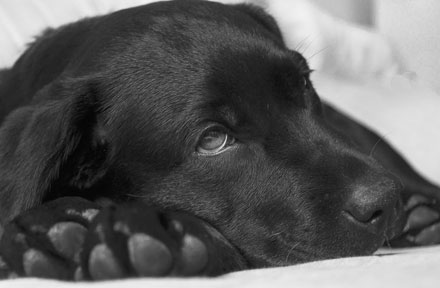
What to Feed a Sick Dog With No Appetite? [2025 Guide]
May 16, 2023
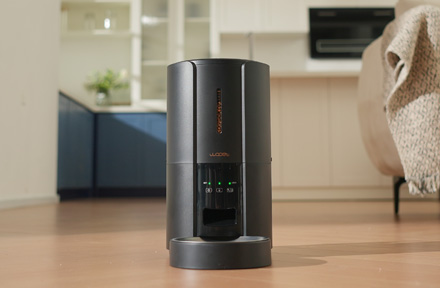
Troubleshooting Common Issues with Automatic Pet Feeders: Tips & Tricks for Pet Owners
Oct 26, 2023
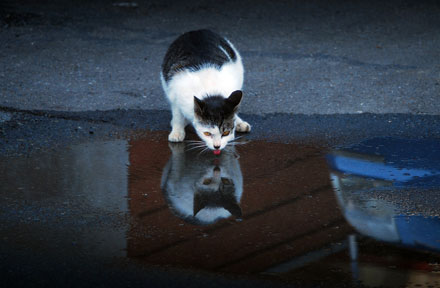
Why Does My Cat Cough After Drinking Water? 8 Potential Reasons
Mar 13, 2023
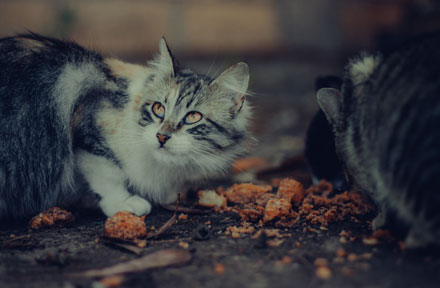
My Cat Only Eats A Little at A Time - What to Do?
Feb 27, 2023
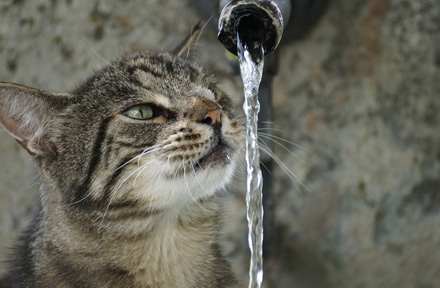
Why is My Cat Throwing up Water? Top 5 Causes Here
Feb 08, 2023
$99.99
$129.99
Copyright © 2025 WOPET. All Rights Reserved.